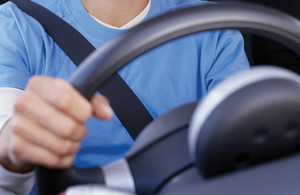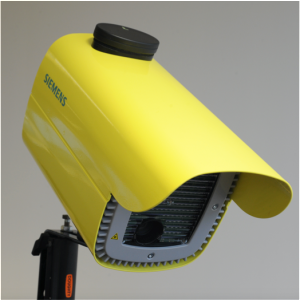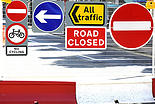- A minimum 12 month driving ban
- A criminal record
- A fine of up to £5,000
- An endorsement on your licence for 11 years
Plus the everyday consequences of a conviction that could include:
- An increase in your car insurance premium
- Losing your job
- Trouble getting in to countries like the USA
- The shame of having a criminal record
- Loss of independence
The Institute of Advanced Motorists calculate that a drink drive conviction could cost between £20,000 – £50,000 as a result of fines, solicitors fees, increase in car insurance and loss of job.
Think what a drink drive conviction could cost you. If you drink, don’t drive.
Read Ed, Steve, Jess’s and Suzanne’s stories of having a drink drive conviction here.
Jess, 21 from the Forest of Dean, was banned from driving for 18 months
I had never been in trouble with the police before and I’ll never forget the experience of being arrested, booked into the police cells and being treated like a criminal. It was a moment of madness but it’s had a massive effect on my life. Because of the court hearings and time off work I lost my job and I’m still unemployed now. There isn’t much public transport where I live and because I can’t drive I’ve lost some of my friends. I want to warn others of the consequences of drink driving, because my life will never be the same again. I’m just so glad I didn’t hurt or even kill anyone through my actions.
Ed is 24 and from Cheltenham and faces life with a criminal conviction
I was stopped just before midnight on a bank holiday Monday. I was on my way to see a friend for some support after a very emotional argument with my girlfriend. I knew I was over the drink drive limit but was under the illusion that I would be ok, that I wouldn’t get caught and that ultimately, it was just a short journey so what were the chances?! When I was stopped I was feeling confident, that I could try and persuade the officers that I was not in fact intoxicated. You’d be surprised at how badly booze sticks to your breath, your clothes and no matter how hard you try, you cannot act sober.
I knew that the breath test would be positive and I had attempted to prepare for that feeling. When the officer told me I had blown 52 and the limit was 35 I was absolutely devastated, angry and upset.
I have never been arrested before and never been in a cell. For whatever reason, and to this day I still don’t know why, I was kept in a cell for 13 hours. I had all that time in complete silence thinking about what I had done and the implications on my life, and others. It was the most humbling experience I have ever had.
My friends and family were very disappointed that I had decided to drive that evening. It caused problems with my 2 year relationship (that has now been resolved) with my girlfriend and friends judged me for my poor decision making. I think and hope that they all forgive me for what I did but it’s a horrible feeling knowing that I have now been tarnished with that brush.
I had never been to court and it was a very daunting experience. I had my father with me for moral support and a solicitor present. When I was handed my sentence my whole life as I knew it was turned upside down. From that moment for the rest of my life I now had a criminal conviction.
Steve is 45 and from Cheltenham and talks about life without a licence
Thanks for giving me the opportunity to pass on my experience, having had nearly a year without my licence.
I counted myself as a professional driver – a Sales Manager driving an average of 35k miles a year for the past 27 years. I didn’t normally drink/ drive – in fact my partner is teetotal and always happy to drive!
On the day I “Got Done” I had been in my local pub for a couple on a Sunday lunchtime and drove less than a mile home. I thought I’d be fine. I shouldn’t have had any.
Half way back, I was in collision with a left hand drive lorry, who cut the corner. The accident would have taken place had I had a drink or not – but the consequences very different!
You go to court – it’s a criminal offence, your name is in the paper.
Until it happens to you, you just don’t realise how difficult life is without a car – standing at bus stops in the rain and cold – waiting for trains – not just occasionally – but every day – for 15 months in my case. My income has been cut in half – I am one of the lucky ones – I have a job, but over half the people I have met who have lost their licences – lost their jobs.
Just going shopping, getting about I have had to rely on friends and family, it’s like being a child again – please can you take me to….. Any chance you can pick me up from….
Getting to an appointment last week involved 4 trains, 2 buses and cadging a lift (twice actually) – what would have been 5/6 hours turned into a 14 hour day – and that was just Monday!
I am not seeking sympathy – I was the fool who got behind the wheel! I am currently 2 weeks into a 4 week driver rehabilitation course – reduces your ban, but you lose 4 Saturdays – then realise what effect the stupidity and selfishness of drink driving has on others!
And, I was lucky – in my case nobody was injured…or worse.
Suzanne’s Story: What a drink drive conviction cost me
Married mum-of-two Suzanne from Gloucestershire is currently banned for drink driving following a collision on her way home from lunch:
I’d had two or three glasses of wine with lunch. I felt fine and I thought it would be ok to drive. I was only three miles from home, after all.
Unfortunately I had a bump, colliding side on with an oncoming car as I went round a bend. Apparently I veered over the centre line of the road. Thankfully nobody was hurt – I would never ever have forgiven myself if they had been.
The police were called and both parties were breathalysed, which is standard I believe. I was arrested for being over the limit, taken to the police station and held in the cells for over four hours.
The whole thing seemed surreal, I couldn’t believe something like that could happen to me. I’d never been in a police station before and had a clean licence. I felt absolutely shocked and humiliated.
I was bailed on condition that I make an appointment to attend two sessions with a counsellor for the Independence Trust to talk through my actions and what was likely to happen next. Rather stupidly I thought that involved a fine and some points on my licence. I was horrified to hear that I would definitely be banned for driving for at least 12 months. I had no idea how severe the penalty would be.
It was about six weeks after my arrest before I was due to appear in court. We live in a small village community and news spreads like wild fire. I really didn’t want anyone to see me.
Waiting for my court appearance was a horrible, nerve-wracking experience. And having to stand in the dock while my immediate future was being decided by a magistrate was just awful. I felt so humiliated.
I was banned for 15 months. I had to pay a fine of £360 and my licence was taken away.
My family were so ashamed and disappointed in me, as I was with myself. I had no idea how far reaching the consequences of my conviction would be.
School runs: we live in the country and I have two children to take to and from school in Gloucester. I was part of a rota with other parents and my loss of licence meant I could no longer take my children to school.
My eldest child was due to take his GCSE exams and I couldn’t personally take him to and from them. With some complicated planning and my husband having to rearrange his work schedule, through friends and local taxi companies we managed – but it was awful.
The same was true of sports fixtures and play dates for my children, which took a lot of planning and a lot of favours. I was determined my own stupidity wouldn’t impact on their lives.
The worst for me was the fact that my parents, who are in their late 80s, live an hour-and-a-half away. It now takes a taxi, two train journeys and a half-mile walk to get to them. I pray that they don’t get taken ill as I cannot get to them quickly now.
For me personally, I feel so very isolated. We live in the country and I am now reliant on my husband, my friends and a local taxi driver. And I still have another seven months to go.
The effects are so wide reaching. My eldest child will soon be eligible to drive but I won’t be able to help him learn.
We have relatives in Canada but I will never be able to visit as they won’t accept anyone with a drinking under the influence conviction. Similarly, if we want to go on holiday to America I’ll need to attend an interview with the American Embassy in London.
My insurance premiums will be very expensive and it’s unlikely that I’ll be able to hire a car or be given a courtesy car when my car is in for service. My conviction will be on my licence for 11 years and I will have a permanent criminal record. All for a few glasses of wine with lunch.
Imagine if I’d hurt someone – it wouldn’t just be the 15 months of regret and recriminations – it would have been a lifetime. Those few glasses were the most expensive I have ever had.
Source: Gloucestershire Road Safety Partnership





